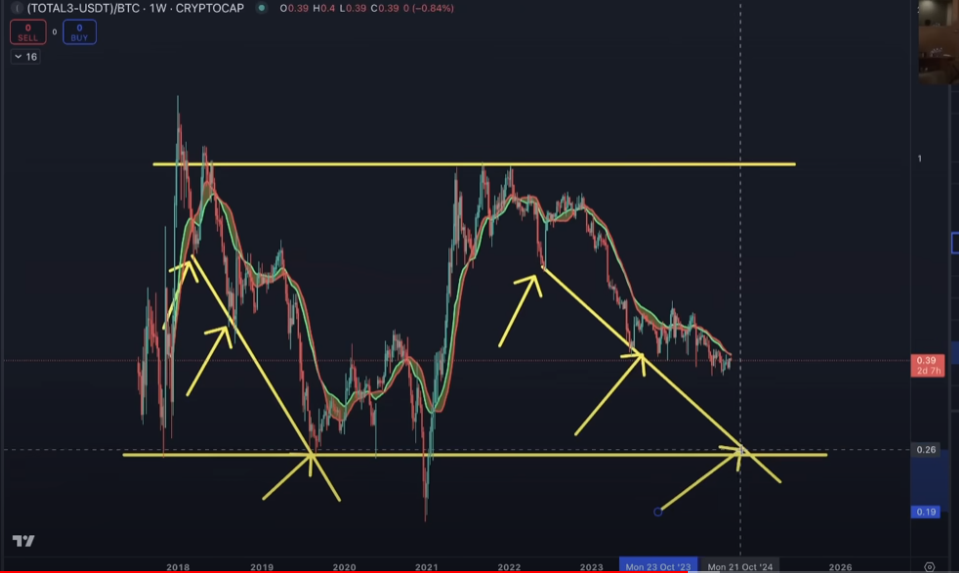Donald Trump is about to be sworn in again, and the crypto market is already counting its wins. Bitcoin wrapped up 2024 with a 120% gain, smashing through its own records to hit $108,315 in mid-December.
Sure, it dipped a little after that, but let’s not pretend anyone’s crying over a 3.2% drop when the year’s gains were that good. Institutional investors have been recalibrating their portfolios, and retail traders are getting in faster than ever before.
Some actually expect Bitcoin to hit $500,000 this year, and while those numbers might seem wild, the momentum is hard to ignore. Crypto has already survived three cycles of booms and busts, so what’s stopping it from breaking new ground in a political climate that’s likely to be the most crypto-friendly one we’ve ever seen?
Bitcoin’s institutional grip tightens
December saw a $1.8 billion outflow from Bitcoin exchange-traded funds (ETFs) in the U.S. Why? Profit-taking. The Trump-triggered rally had already pushed Bitcoin to dizzying heights, and investors were eager to cash out while the getting was good.
Open interest in Bitcoin futures on the Chicago-based CME Group also dropped nearly 20% from its peak. “Bitcoin’s adoption by a wide range of institutions will stabilize spot movements and align volatility closer to equities,” said QCP Capital.
“With BTC now broadly adopted by a broad spectrum of institutions—adding university endowment funds to the list this year—allocations are likely to increase, strengthening Bitcoin dominance, stabilizing spot movements, and shifting volatility dynamics closer to equities.”
The industry’s biggest headache has always been legal uncertainty, but if the Trump administration delivers the clarity investors are craving, the capital flow between traditional and crypto markets would explode. Imagine Bitcoin becoming as boringly stable as blue-chip stocks—not in price, but in how institutions treat it. That’s the dream, and 2025 might just make it real.
Blockchain solutions set to break through
- Decentralized Digital Identities (DDIs): The dream is simple: store all your personal data on a blockchain in encrypted form, where only you decide who gets to see it. Projects like Polygon ID and World ID are already in the game, but 2025 could be the year they sign up millions of users. If they pull it off, DDIs could disrupt everything from financial transactions to online authentication. No more handing over your life story to centralized databases that leak your data every other week.
- Oracles: If DDIs are about controlling your data, oracles are about trusting the data you’re given. Platforms like Chainlink and Band have already proven their worth in crypto ecosystems, but they’re still niche. 2025 might change that. Imagine oracles becoming the go-to source for verifiable, trustworthy information online. No more “just trust us” nonsense from traditional media or government agencies. Instead, you get data backed by financial guarantees, where the source pays up if they’re wrong.
- Zero-Knowledge Proofs (ZKPs): ZKPs have been around for years, but they’re finally stepping out of the shadows. These mathematical marvels let you prove something is true without actually showing the data. Crypto exchanges started using ZKPs to prove solvency back in 2023, but their potential goes way beyond that. In 2025, we could see ZKPs used for everything from verifying social media platforms’ age policies to proving supply chain integrity, especially with trade wars expected.
Crypto’s affair with AI and hardware bottlenecks
Artificial intelligence and crypto are like two sides of the same coin. AI needs trustworthy data to make decisions, and crypto can provide it. Think oracles and ZKPs feeding bulletproof information into AI systems.
On the flip side, AI can supercharge crypto adoption by automating complex processes and making the ecosystem more user-friendly.
But here’s the catch: all this tech needs hardware, and lots of it. Crypto is a computing power hog, and so is AI. We’re already seeing chip shortages and data center bottlenecks, and the problem isn’t going away.
Governments might step in to regulate who gets access to these resources, which could create winners and losers in the crypto world. Will Amazon hoard all the chips for its own projects? Will independent data centers survive? These are the questions that will define the industry’s trajectory.
Let’s not forget the energy issue. Crypto’s critics love to harp on its electricity consumption, and they’re not entirely wrong. But with more capital flowing into renewable energy projects and efficient mining operations, the industry is finding ways to adapt. Bitcoin’s renewable energy usage currently stands at over 56%.





